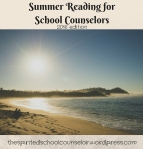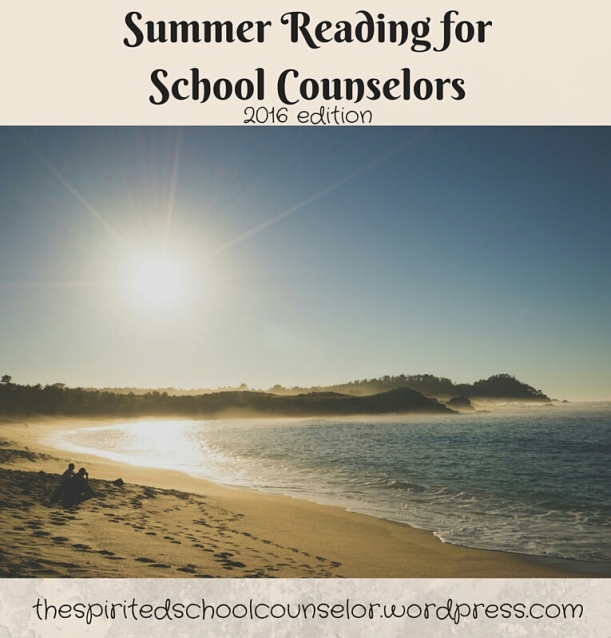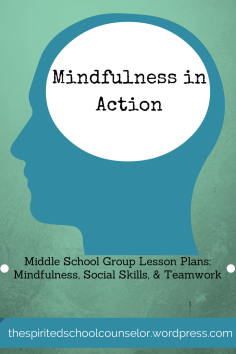Disclosure of material connection: Some of the links in the post below are “affiliated links.” This means if you click on the link and purchase the item I will receive a small commission. With that said, I only recommend items that I have found useful as a school counselor and educator. I am disclosing this in accordance with the Federal Trade Commission’s 16CFR, Part 255: “Guides Concerning the Use of Endorsements and Testimonials in Advertising.”
One of my most popular past posts has been my summer reading list so I decided to make it an annual occurrence. This year I have a stack of books picked out and I hope to read them all this summer. You may notice one is a repeat from the last list. This is because I don’t always make it through all of my summer reading books.

I’m half way through Fostering Resilient Learners and am loving it! I have learned some great information as well as new ways to help teachers build stronger relationships with their students. It’s written by a veteran mental health clinician and an experienced principal. The authors are a fantastic combination for a school counselor, but really any educator. I don’t know about you, but my grad program didn’t go into too much detail on ways to help children who’ve had a traumatic event be successful in school. This book has been a great introduction for me and I can’t wait to learn more ways to create a trauma-sensitive classroom (and school).
One of the things I mentioned on my year-end reflection was that I would like to use data to show my effectiveness as a counselor next year. I hope to do this by reading 2 books: The Use of Data in School Counseling: Hatching Results for Students, Programs, and the Profession & Facilitating Evidence-Based, Data-Driven School Counseling: A Manual for Practice
. I did collect enough data to create a G.R.I.P. for one of my groups this year but I want to do more in the future. I’m hoping these books can help!
Two of the books are from Love & Logic. I recently attended a one day training on this approach and connected with many of the ideas and strategies to use with students. They put a great emphasis on relationships and empathy, which I love! I want to learn more and hope to this summer! The two books I decided to buy at the conference were Creating a Love & Logic School Culture and From
.
A couple other books that are on the table for possible reading this summer focus on challenging behaviors and mindset. As an elementary counselor I find myself helping with challenging behaviors far more than I did as a middle school counselor. One of my co-workers recommended How to Reach and Teach Children with Challenging Behavior (K-8): Practical, Ready-to-Use Interventions That Work and I am looking forward to checking it out. Positive Strategies for Students with Behavior Problem

Lastly, a couple on mindset! I attended our state counselor conference earlier this year and attended a great session on mindset. I even did a lesson on growth and fixed mindset for my 4th graders after I attended. Mindset: The New Psychology of Success
and Mindsets in the Classroom: Building a Culture of Success and Student Achievement in Schools
were both referred to during the presentation.
What are you reading this summer? I’d love to hear whats on your P.D. summer reading list (or your for-fun reading list!) as well as any recommendations.
Thanks for stopping by!
















